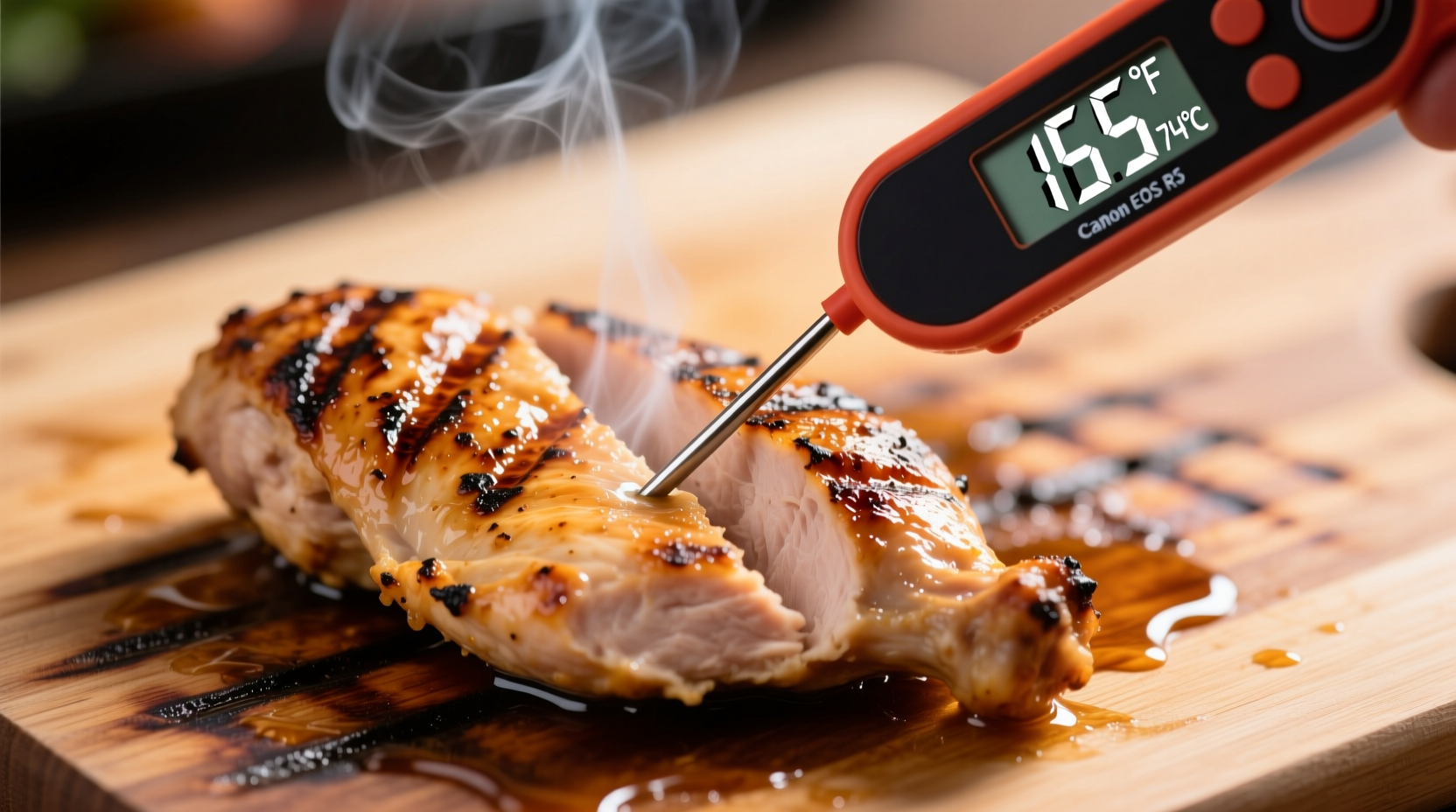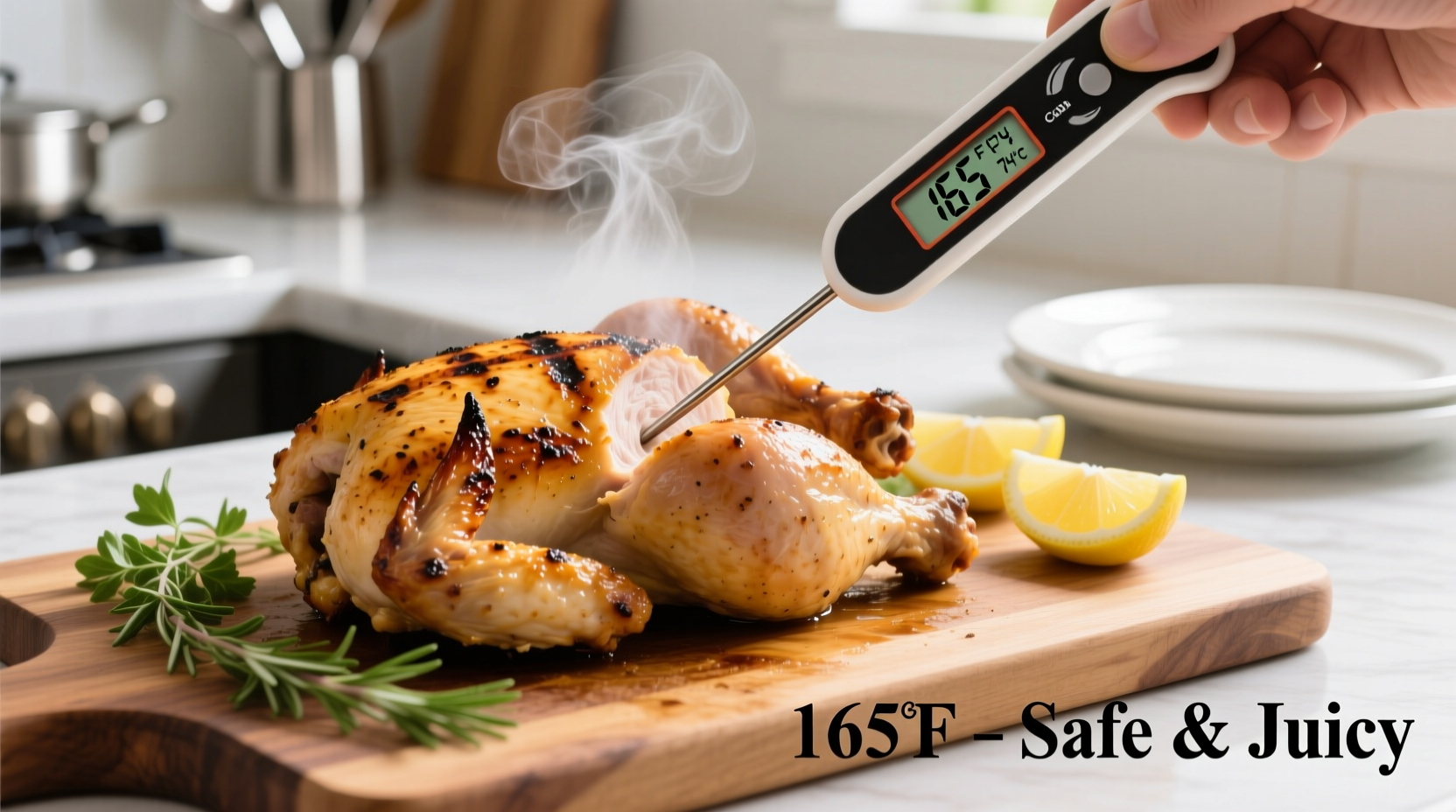Have you ever wondered why your perfectly cooked chicken sometimes gets labeled "unsafe" while slightly pink chicken might actually be safe? Understanding the precise temperature requirements for chicken isn't just about following rules—it's your essential defense against foodborne illness while maximizing flavor and texture. In this guide, you'll discover not only the critical temperature threshold but also how to measure it accurately, common mistakes to avoid, and when exceptions might apply.
Why 165°F Is Non-Negotiable for Chicken Safety
Chicken requires thorough cooking because it commonly carries Salmonella and Campylobacter bacteria that can cause serious food poisoning. These pathogens don't magically disappear at a specific temperature—they die at different rates depending on both temperature and time.
The USDA established 165°F as the minimum safe temperature because at this point, harmful bacteria are eliminated instantaneously. Lower temperatures require holding the chicken at that temperature for specific durations to achieve the same safety level, which is difficult to verify without specialized equipment.
| Temperature | Time Required for Pathogen Elimination | Practical Application |
|---|---|---|
| 165°F (73.7°C) | Instantaneous | Standard USDA recommendation for home cooking |
| 150°F (65.5°C) | 3 minutes | Requires precise temperature control (sous vide) |
| 140°F (60°C) | 26 minutes | Professional cooking with specialized equipment |
The Evolution of Chicken Cooking Guidelines
Chicken cooking recommendations haven't always been this precise. Understanding how these guidelines developed helps explain why 165°F became the standard:
- Pre-1990s: Many cookbooks recommended cooking chicken until juices ran clear, a method now known to be unreliable
- 1993: USDA first established specific temperature guidelines for poultry at 180°F for whole birds
- 2006: Temperature lowered to 165°F based on improved scientific understanding of pathogen destruction
- 2011: USDA Food Safety and Inspection Service officially adopted 165°F as the standard for all poultry products
This evolution reflects better scientific understanding of food safety. The change from higher temperatures to 165°F wasn't about reducing safety standards—it was about finding the precise minimum temperature that ensures safety while preventing overcooking.
Proper Temperature Measurement Techniques
Knowing the correct temperature is useless if you don't measure it properly. Here's how to get accurate readings every time:
- Use an instant-read digital thermometer (not the dial type that comes with many ovens)
- Insert the probe into the thickest part of the meat, avoiding bone, fat, or gristle
- Check multiple spots in larger pieces of chicken
- Verify temperature just before removing chicken from heat source
- Allow carryover cooking to finish the process (temperature rises 5-10°F after removal from heat)
Many home cooks make the mistake of checking temperature too early or in the wrong location. The breast and thigh of a whole chicken will reach safe temperatures at different times, which is why checking multiple locations is essential.

When Lower Temperatures Might Be Acceptable
While 165°F remains the standard recommendation for home cooking, certain professional techniques use lower temperatures with specific time requirements. These methods require precise temperature control that's difficult to achieve in most home kitchens:
- Sous vide cooking: Chicken can be safely cooked at 145°F for 30 minutes or 150°F for 10 minutes, but requires specialized equipment
- Restaurant techniques: Some professional kitchens use the FDA Food Code's time-temperature combinations, but implement rigorous safety protocols
- Resting period: Properly rested chicken continues to cook from residual heat, potentially reaching safe temperatures even if slightly below 165°F when removed from heat
For home cooks without specialized equipment, sticking with the 165°F standard remains the safest approach. The margin for error with lower temperature methods is too small when using conventional cooking methods.
Common Misconceptions About Chicken Doneness
Many traditional indicators of chicken doneness are unreliable:
- Juices running clear: Chicken can appear done while still unsafe, or remain slightly pink when fully safe
- Texture firmness: Varies significantly based on cooking method and cut of meat
- Color change: Pinkish tinge can remain in fully cooked chicken due to myoglobin reaction, especially in younger birds
The only reliable method to determine if chicken is safely cooked is using a properly calibrated food thermometer. Don't rely on visual cues or cooking time alone.
Special Considerations for Different Chicken Cuts
All chicken products require the same minimum internal temperature of 165°F, but different cuts present unique challenges:
- Whole chicken: Check temperature in breast, thigh, and wing joint areas as they cook at different rates
- Chicken breasts: Prone to overcooking; remove at 160°F and allow to rest to reach 165°F
- Ground chicken: More surface area for bacteria; must reach 165°F throughout
- Stuffed chicken: Both the chicken and stuffing must reach 165°F
Remember that dark meat (thighs, legs) can be cooked to slightly higher temperatures (up to 175°F) without becoming dry, while white meat (breasts) becomes tough above 165°F. This is why many chefs recommend removing chicken breasts at 160°F and allowing carryover cooking to reach the safe temperature.
Essential Food Thermometer Selection Guide
Not all thermometers provide the accuracy needed for proper chicken cooking. Here's what to look for:
- Response time: Instant-read thermometers should register temperature in 2-5 seconds
- Accuracy: Look for ±0.5°F accuracy for critical food safety measurements
- Probe size: Thin probes (1/16 inch) cause minimal damage to meat
- Calibration: Choose models that can be recalibrated for long-term accuracy
According to the USDA Food Safety and Inspection Service, digital instant-read thermometers are the most reliable option for home cooks. Dial thermometers often included with ovens lack the precision needed for accurate poultry temperature measurement.
What to Do If Your Chicken Doesn't Reach 165°F
If your chicken hasn't reached the safe temperature:
- Return it to the heat source immediately—don't let it sit at room temperature
- Continue cooking in short intervals (1-2 minutes)
- Recheck temperature after each interval
- Never partially cook chicken and finish later—that creates the perfect environment for bacterial growth
Remember that chicken continues to cook from residual heat after removal from the heat source. Proper resting (5-15 minutes depending on size) allows temperature to rise 5-10°F while redistributing juices for better texture.
Additional Food Safety Practices When Cooking Chicken
Temperature is just one component of chicken safety. Follow these additional practices:
- Prevent cross-contamination by using separate cutting boards for raw chicken
- Wash hands thoroughly after handling raw poultry
- Sanitize surfaces that contact raw chicken with a bleach solution
- Refrigerate leftovers within two hours (one hour if room temperature exceeds 90°F)
- Thaw frozen chicken in the refrigerator, not at room temperature
According to the Centers for Disease Control and Prevention, proper handling practices combined with correct cooking temperatures reduce the risk of foodborne illness from chicken by over 90%.











 浙公网安备
33010002000092号
浙公网安备
33010002000092号 浙B2-20120091-4
浙B2-20120091-4